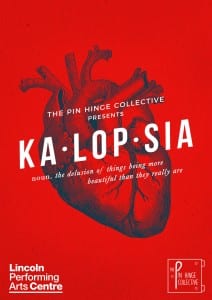Each Delusion brought challenges in their own way, however, the most challenging was Sam’s character Tom’s space delusion. The delusion follows, Tom’s dream of becoming the first British astronaut to walk on the moon, as well as portray him reaching this dreams. The delusion consists of physical theatre to create the weightlessness and the anti gravity aesthetic which the scene wanted to for fill.
The challenge this came from the dynamic changes that this delusion possessed, to counter act this, I had to make sure, i worked alongside Holly (the choreographer) to make sure the mood which she created matched the music which i produced for the scene. Essentially, the music had to match the emotion and the style of physical theatre which Holly was creating. The section had three differing styles, the first, was while Sam’s character was building the rocket. This section needed have a slight build to assure it gave the right emotion to the scene, as well as set a gentle overtone to the performance. For this opening movement peice, I decided that soft piano would set a nice pace for Sam to act out his scene to as well as set the tone for his delusion. Therefore, i believed that Hans Zimmer’s Afraid of Time was a suitable choice.
(GSOAT, 2016).
Afraid of Time was used in the Motion Picture, Interstellar (2014). I believed that the style of this song, suited the calm build up of ascending to space, as well as gave the same atmosphere as space, like the purpose is the tracks purpose within the film.
After this build up had been established and Sam’s character had arrived in space, i believed that the correct setting had been produced to the section, therefore i believed that the music itself could change, to compliment the different style which the scene was about to transcend to. The second, stage of the section turned into a pyshical theatre peice, involving a lot of breathing and wind like moves, so i wanted to capture this through the next piece of music.
(Chambon, 2014).
Therefore, I believed Philip Chambon’s Coupling Dance worked best for this section. The song possessed the breathing and weightlessness which the section required, furthermore the track solely builds in pace which strongly accompanies the movement of the section, as the lifts heighten so did the movement producing a strong build up for the final lift.
The Final lift was the climax of this performance, it would show Sam’s character finally achieving his dream. For this moment, I wanted to use something different to the previous tracks as well as a well known song which relates to the style of this section. I decided nothing, would suit this moment more then David Bowie’s Space Oddity. However, i believed that the original version did not hold the grandeur that the moment possessed. So instead I looked into different covers of the song to find something that could match the performances climax.
I decided to use the London Symphony Orchestra’s adaptation of Space Oddity. The track from 1:10 starts to build up on its entrance to the first chorus, i believed if this was edited and timed correctly, it would create a nice accompanying sound which would heightening the experience of the lift, as well as producing the grandeur that the lift rightly deserves.
work cited
Chambon, P. (2014) Coupling Dance [download]. 4 minutes. 56 secs. Between shadows. London: Phillip Chambon Music. Available from http://www.philipchambon.com/danceballet.html [accessed 23 April 2017].
edgycorners (2010) Space Oddity by The London Symphony Orchestra . Available from https://www.youtube.com/watch?v=HB3k4wAAAQU [accessed 23 April 2017].
GSOAT (2016) Afraid of Time – Hans Zimmer // Interstellar Soundtrack (Deluxe Edition . Available from https://www.youtube.com/watch?v=wzFDfGK6zG4 [acessed 23 April 2017].
